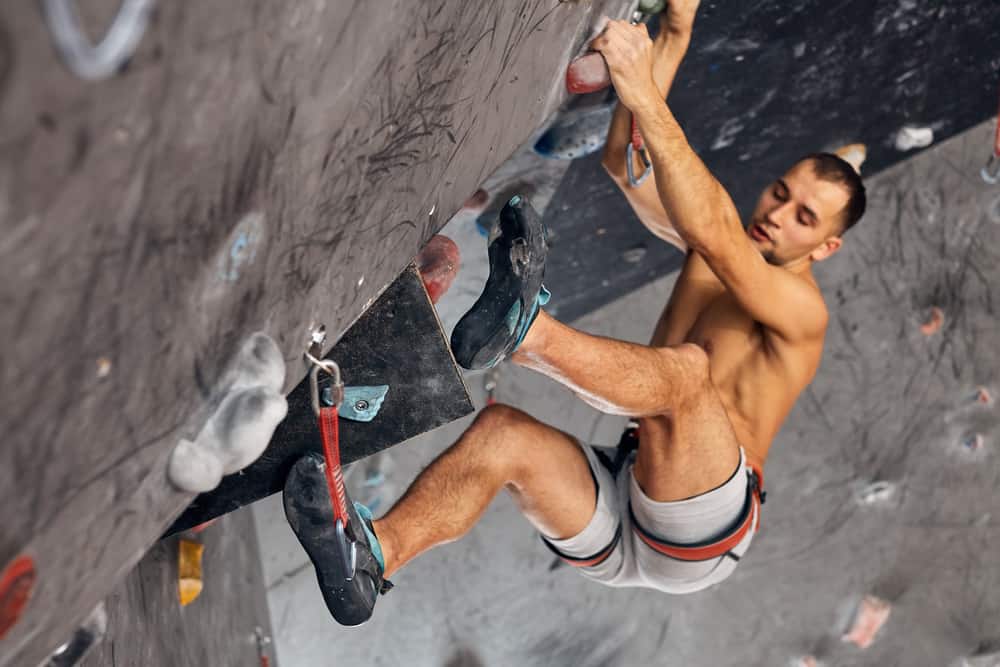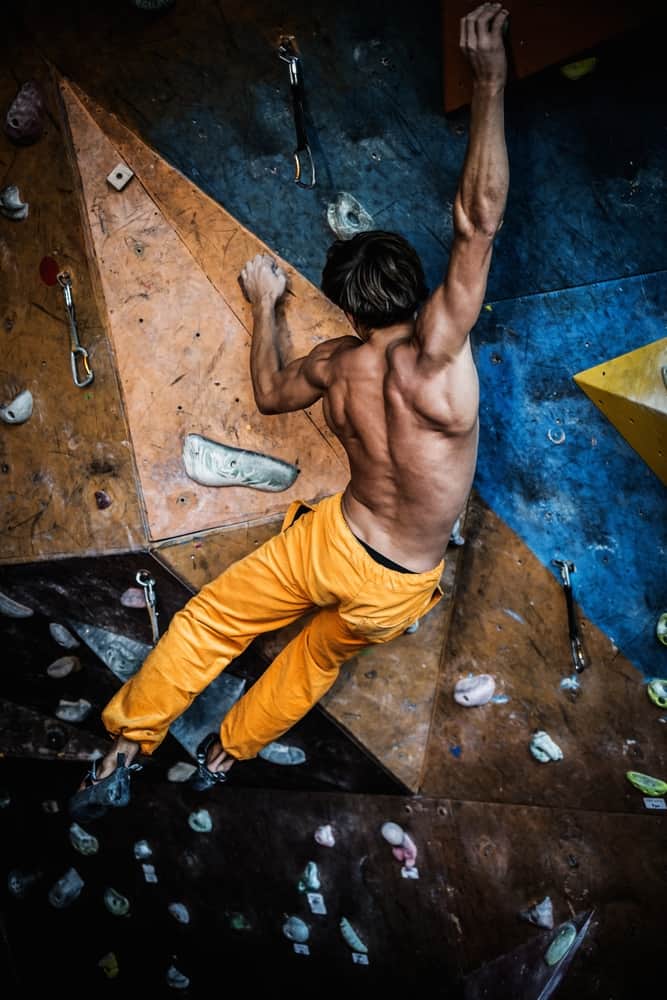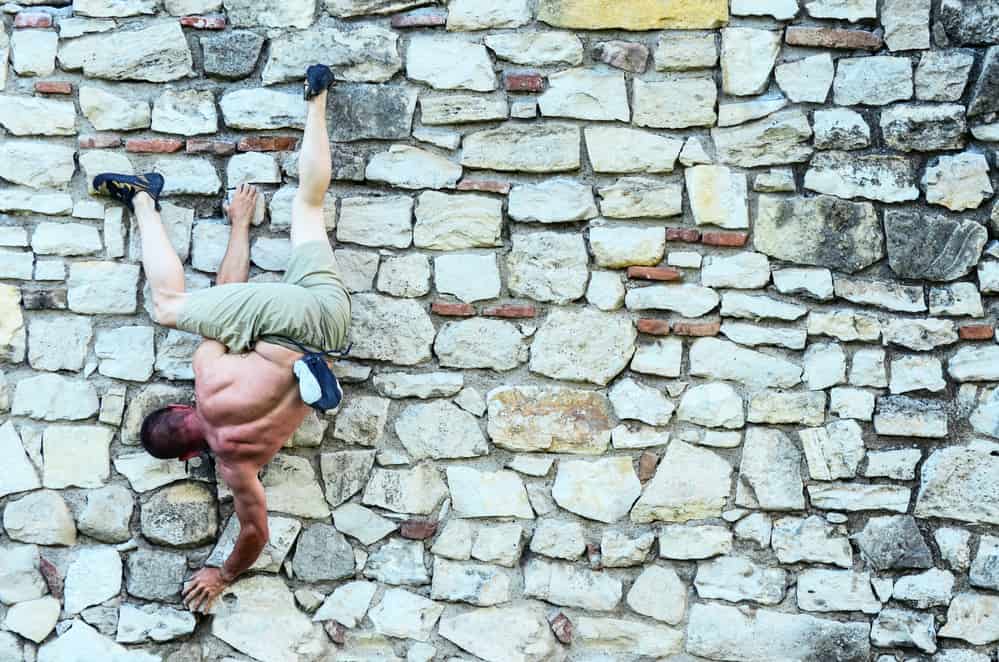Rock climbing can be done in different ways, depending on the terrain. The most common way to climb is on a rock face with plenty of hands and footholds. This is called “face climbing.”
An alternative is to climb on a slab where there are few or no handholds, using friction and balance to make your way up. This is called “slab climbing.”

Finally, you can climb inside a cave or overhanging area, where you use your strength and technique to grab onto small holds in the rock. This is called “climbing.”
The type of rock climbing you do will depend on your available terrain. If you’re lucky enough to live near mountains, face climbing is probably the most common type of climbing you’ll do.
Slab climbing is more common in areas with lots of large boulders, like Joshua Tree National Park in California.
Climbing is typically found in caves or overhanging areas, like the Gunks in New York.
Table of Contents
What Are the 6 Types of Climbs?
Rock climbing is a great way to get outside and enjoy the natural world. There are many different styles of climbs, each with its advantages and disadvantages.

The six climbs are slab, crack, face, overhang, chimney, and off-width. Each type of climb requires a different set of skills and techniques.
- Slab climbs – are relatively easy and don’t require a lot of technical skill. They are suitable for beginners or someone who wants to move quickly up the rock.
- Crack climbs – are more complicated than slab climbs, but they offer great hand and foot holds. They are perfect for someone who wants to learn how to crack climb.
- Face climbs – are the most popular type of climb. They offer a variety of hand and foot holds, making them challenging and fun.
- Overhang climbs – require a lot of strength and technical skill. They can be challenging and dangerous if you’re not careful.
- Offwidth climbs – are the most challenging type of climb. They require a lot of strength and technique.
What Is the Hardest Type of Climbing?
The three main types of rock climbing are sports climbing, trad climbing, and bouldering. Sport climbers use pre-placed bolts to make their way up the mountain, trad climbers use gear such as cams and nuts to protect themselves from falls, and boulderers stay low to the ground and rely on solid fingers and toes to make their way up the boulder.

Each of these styles has its unique benefits and challenges. Sport climbers can reach high altitudes quickly, trad climbers can climb routes off-limits to sport climbers, and boulderers can do challenging climbs without needing a lot of gear. However, sports climbers need an excellent technique to clip the bolts correctly, trad climbers need to be able to place equipment properly, and boulderers need to have strong fingers and toes.
So, which is the most challenging type of climbing? It depends on your strengths and weaknesses. If you are a sports climber used to clipping bolts, then trad climbing might be more difficult for you. Bouldering might be more difficult for you if you are a trad climber used to placing gear.
What’s the Difference Between Bouldering and Rock Climbing?

Rock climbing is an important sport that can be done in many different ways. There are three main styles of rock climbing: bouldering, sports climbing, and traditional climbing. Each one has its own unique set of challenges and benefits.
Bouldering is a type of rock climbing that is done without a rope. The climbers use their hands and feet to climb short and steep walls called boulders. This style is excellent for beginners because it teaches them how to use their bodies to climb and control their movements.
Sport climbing is the most popular type of rock climbing. It is done with a rope, and the climber uses gear like carabiners and anchors to secure themselves to the wall. Sport climbs are typically shorter than traditional climbs, but they can be more challenging because of the technical moves required.
Traditional climbing is the oldest form of rock climbing. It involves using gear like cams and nuts to secure oneself to the wall, and it usually takes place on longer routes outdoors. Traditional climbing can be more dangerous than other styles, but it offers a greater sense of adventure.
What Is Free Climbing vs. Soloing?
Rock climbing can be done in various ways, each with its importance and benefits. The two main styles of climbing are free climbing and soloing. Free climbing is when the climber uses ropes and gear to protect them from falls while soloing is when the climber climbs without any protective equipment. Both styles have their risks and rewards, and knowing the difference between them is essential before deciding which one is right for you.

Free climbing is the most popular form of rock climbing, and it is what most people think of when they picture someone rock climbing. This climbing style uses ropes and gear to protect the climber from falls. The climber will typically have a partner who belays them from below, which means they will hold the rope tight in case the climber falls. Free climbing can be done indoors or outdoors.
Soloing is another option for those looking to climb without using ropes and gear. This style of climbing is much more dangerous, as there is no one to catch the climber if they fall. Soloing should only be attempted by experienced climbers comfortable with the risks involved. Many climbers enjoy soloing because it allows them to move faster and climb more freely than when they are free climbing. It can also be a great way to challenge oneself and push one’s limits.
What Is the Most Popular Type of Rock Climbing?
Rock climbing is a critical and popular sport. There are many types of rock climbing, each with its benefits and drawbacks. The most popular type of rock climbing is probably sports climbing.
This is where climbers attempt to scale a rock face using only their hands and feet. Sport climbing requires a lot of strength and endurance and is often considered one of the most challenging types of rock climbing.
What Is Trad vs. Sport Climbing?
Rock climbing can be done in different ways, each with its benefits and drawbacks. The two main styles of climbing are trad and sport.
- Trad climbing is rock climbing and involves using gear you place yourself to protect against a fall. This type of climbing is more dangerous but can be more rewarding, as it feels more like an outdoor adventure.
- Sport climbing is a newer form of climbing and involves using pre-placed bolts to protect against a fall. This type of climbing is safer but can feel more like a gymnastics routine than an outdoor adventure.


